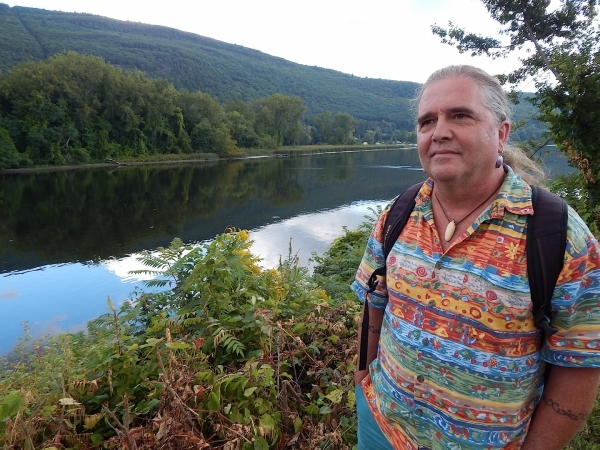BRATTLEBORO — For Rich Holschuh, the inclusion of technology to let people hear his pronunciation of indigenous words on interpretive signs along the Sibosen Trail “deepens and expands the story.”
As director of the Atowi Project at the Retreat Farm on Route 30, Holschuh now works full time helping people see and understand the Native community and its proud heritage here, in the place that was Wantastegok (“At the River Where Something Is Lost”) long before anyone ever called the same land “Brattleboro.”
“It's all about place, where you are,” says Holschuh, formerly the public liaison for the Elnu Abenaki tribe. “And that's where change begins - where you are.”
So Holschuh readily agreed when Lynn Levine, a forester, and Andrew Graminski, at the time a planning technician for the town, asked him to help with the nascent project of creating an interpretive trail that centers the region's Abenaki heritage.
Together, they came up with the idea of accessing the spoken word via QR code, something Holschuh calls “an important addition” to the traditional and static signage, maps, and printed materials.
By putting language front and center, people can immerse themselves into a different world - one where the Abenaki have been for generations - “experiencing it in their own way through their own cultural eyes,” he observes.
Speakers of English are distant from the abstract origins of certain terms, he says.
“We don't understand why we call an oak an 'oak,'” he points out - but, if you know the word for oak in Abenake, “you'll see that it's seen as 'the acorn tree.'”
Similarly, the word for “sugar maple” translates as “rock tree,” Holschuh says - both because the species grows in mountainous terrain and also because “the wood is very, very hard.”
“Whereas, in English, the word 'maple' doesn't really have any meeting any intrinsic meaning to us, right?” he says, calling the English word for the tree “an abstraction attached to an object.”
“So I'm trying to expand the story, bring some depth to the story, with the addition of those spoken words and let people know that other folks have been here for a really long time,” he says.
A video on the Atowi Project website pegs that span of time as approximately 10,000 years.
Holschuh hopes the trail conveys ”a message of sustainability” - that present-day Native Americans have been “here for thousands of years, and they're still here.”
“That says something,” he says, pointing out that this context “makes it a lot bigger just saying, 'This is a maple tree.'”
Holschuh sees the irony in people along the trail using “this high-tech, hand-held personal communication device to access an ancient language.”
“But by the same token, it's a way of demonstrating that culture is not static, that one can maintain one's teachings and one's values while evolving,” he notes. “You can hear the Abenaki language - which was always a spoken language, not a written language - while you're there in place.”
